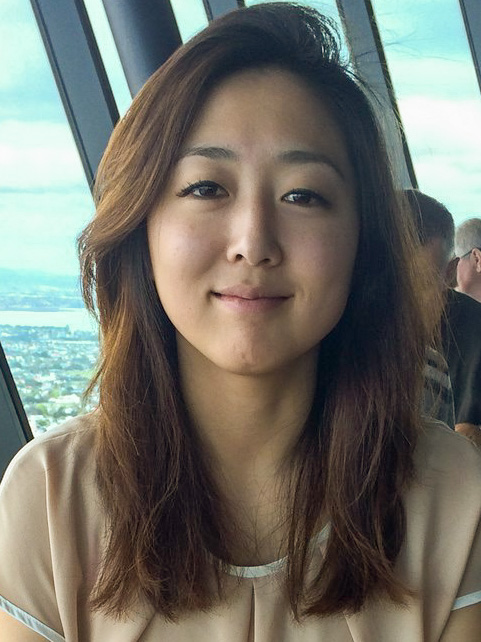I sometimes like to re-read books, if the message in the book bears repeating. “Essentialism” By Greg McKeown is a book I wanted to re-read at the start of this year to remind myself of how to keep what’s important at the top.
The book’s premise is that doing the “right” things instead of pursuing more things will lead to a higher level of contribution, which then lead to a more fulfilling life.
What is Essentialism and what are its benefits?
Essentialism is an idea that by only focusing on the important (‘essential’) things, one could make the highest contribution towards those. As the author Greg McKeown puts it:
Essentialism is not about how to get more things done; it’s about how to get the right things done. It doesn’t mean just doing less for the sake of less either. It is about making the wisest possible investment of your time and energy in order to operate at your highest point of contribution by doing only what is essential.”
This necessarily means we need to choose what’s important, understand what’s not important by extention (and learn to say no to those), what it costs for us to say yes to something that’s not important.
The benefits of Essentialism is that by focusing on only the things that matter, you have time and space to think and act on the things that matter, which then enables you to do great work - work that you may not have been able to do, if you were to say yes to things that don’t matter as much and spent the time or energy on that instead.
How do I live like an Essentialist?
McKeown’s steps to becoming an essentialist is as follows:
- Explore - reflect and find out what’s vital in your life;
- Eliminate - once you know what’s vital, eliminate the non-important things from your life
- Execute - make your life be centred around doing more of what’s vital
Explore (discern)
According to the book, one can explore what vital in one’s life through giving ourselves space for quiet reflection (be unavailable - ‘escape’). An example of this he gives is that of Bill Gates, who takes a regular week off to think and read.
Additionally, we are urged to take time to really see what matters(signal), rather than being buried in the details of things that matter (noise). Being essential requires we pay attention to what’s important, not what’s loud.
The author then also suggests we let ourselves enjoy “play” and also to prioritise it as if it’s something that’s essential - the reason given to this is that play germinates new ideas and helps us see old ideas in a new light. Play also helps us de-stress, and stress tends to make us less productive, creative and inquisitive.
Related to the note on play, the author urges that we also prioritise sleeping, in order to protect and nurture ourselves (“the Asset”). I’ve read a fantastic book on this and suggest whoever pushes sleep aside to “prioritise” other things in life read the book “Why We Sleep” by Matthew Walker - that book has helped me understand just how damaging not sleeping enough can be, and made me regret my uni years when I spent many days cramming for exams until 1 or 2 in the morning.
Lastly, in exploring, the author tells us that we need to be applying a brutal/extreme lens to deciding what’s important and gives a good indication of how “extreme” the decision making should be:
In a piece called “No More Yes. It’s Either HELL YEAH! Or No,” the popular TED speaker Derek Sivers describes a simple technique for becoming more selective in the choices we make. The key is to put the decision to an extreme test: if we feel total and utter conviction to do something, then we say yes, Derek-style. Anything less gets a thumbs down. Or as a leader at Twitter once put it to me, “If the answer isn’t a definite yes then it should be a no.” It is a succinct summary of a core Essentialist principle, and one that is critical to the process of exploration.”
The author also provides a helpful %-based system to filter everything through to help us advoid indecision, called the “90 Per Cent Rule”, where if you give an option a score between 0-100, and if the rating is lower than 90%, then that rating should now be changed to 0 and be rejected.
Eliminate
Once we’ve gotten clarity around what’s really important through the process of intentional exploration, the author then urges us to eliminate things that get in the way of focusing on those that are important.
First step to eliminating is clarifying one’s intention (our purpose) - is the intent clear and concise, and will help us understand when we’ve achieved that intent?
Once one is clear on the intent, then we are gently advised to be courageous (in spite of social awkwardness or a sense of obligation we feel) and say no to things that do to help with that intent, as this will help us be effective, as Peter Drucker once said: “people are effective because they say no.”
In addition to saying no to things that come our way, we are also advised to review what we’ve already committed to prior to our intention being made clear, and to “win by cutting our losses”. The author’s guidance here, in order for us to get our head out of the sunk cost fallacy (where we continue something just because of previously invested resources regardless of whether the thing is serving us in the present or not), is to as “if I weren’t already invested in this project, how much would I invest in it now?”. Effectively, we are encouraged to get over the fear of wasted time/resource and to make a fresh start that’s in line with our clear intent.
The book then reminds us that ‘editing’ our life (continue to cut out things that accumulate that don’t serve the right purpose) to reflect our intent should be an on-going work, to ensure we continue to have space to focus on the vital few. In a similar vein, we are also reminded that setting boundaries and limiting ourselves to what we’ve committed to will help us stay on what’s important. The author quotes Clay Christiansen (the author of “The Innovator’s Dilema”), who recalls his commitment to attending church on Sunday which was challenged by his sports team - Christansens’ insistence on not bending the rules “just this once” is admirable, and is a good reminder that when we set boundaries and limits, we’ve set them for a reason, and we shouldn’t unnecessarily re-negotiate each time, lest we end up accepting unimportant things that the boundaries were trying to keep out:
Clay recalls: “That taught me an important lesson. If I had made an exception then I might have made it many times.”2 Boundaries are a little like the walls of a sandcastle. The second we let one fall over, the rest of them come crashing down.”
Execute
In order to do what’s essential, the author presents 6 ideas to consider when executing on the clarified goal:
- Buffer: budget for unexpected scenarios (the author suggests adding 50% to our time estimates), and prepare for contingencies to ensure we reduce any friction caused by the unexpected;
- Subtract: ask yourself “what is the obstacle that, if removed, would make the majority of other obstacles disappear?” and remove obstacles;
- Progress: rather than starting out big, make small steps each day to get to the end goal and celebrate small successes, to then use the momentum to move further.
- Flow: design a routine around what’s essential and make execution effortless through habit and repetition
- Focus: focus on execution in the here and now and enjoy the moment;
- Be: rather than thinking of essentialism as something we “do” occassionally, be an essentalist and live an essentialist life. With every decision, ask “what is essential?” and eliminate everything else.
My views on the book
I like the ideas in this book; the idea that we take away what’s not important, to then have a laser-like focus on what’s important makes sense. I can see how, if we have less to focus on because we’ve eliminated the non-essential from our lives, it will increase productivity and the sense of satisfaction with life.
As Essentialism relates to a mindset shift, I’ve found the book to be relatively opinion-based - this is neither a good nor a bad thing. This might mean that if you wanted a scientific view on why essentialism is good, this book may not answer that question in the way you expected. Aside from that, I’d generally recommend this book to anyone who find themselves busy but not producing outputs they are happy with.
 Sol
Sol 
 the psychology of money - how we think might have more to do what we do than we expect
the psychology of money - how we think might have more to do what we do than we expect